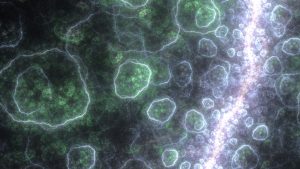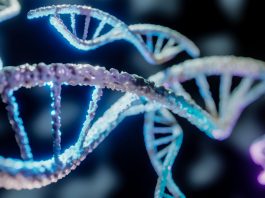A new technology has shed light on the origins of life on Earth.
An international collaborative research group have used an innovative X-ray spectroscopy approach to reveal more about the origins of life on Earth.
The technology was used by corresponding author Zhong Yin, currently based as an associate professor at Tohoku University’s International Centre for Synchrotron Radiation Innovation Smart (SRIS), along with colleagues from the University of Geneva (UNIGE) and ETH Zurich (ETHZ), and the University of Hamburg.
The team used the technology to explore the reaction of urea before life was formed, for the very first time.
They hope that the results can be used to answer the age-old question: what are the origins of life on Earth?
The paper, ‘Femtosecond proton transfer in urea solutions probed by X-ray spectroscopy,’ is published in the journal Nature.
How was life on Earth formed?
Before the origins of life on Earth, called the pre-biotic condition, the atmosphere was less dense. High energy radiation from space was thus omnipresent, ionising molecules.
Scientists have hypothesised that small water puddles containing urea, an organic compound for forming nucleo bases, became exposed to this intense radiation. This would cause the urea to undergo conversion into reaction products, serving as the building blocks of life: DNA and RNA.
To learn more about this process, scientists needed to explore the mechanism behind urea’s ionisation and reaction. They also needed to delve deep into the reaction pathways and energy dissipation.
The technology allowed the team to examine chemical reactions occurring in liquids with precision
The team used an innovative X-ray spectroscopy approach, which harnessed a high-harmonic generation light source and a sub-micron liquid flat-jet. This allowed them to examine chemical reactions occurring in liquids with unparalleled temporal precision.
Importantly, the approach allowed the researchers to investigate the intricate changes in urea molecules at the femtosecond level. That is a quadrillionth part of a second.

“We have shown for the first time how urea molecules react after ionisation,” said Yin.
“Ionisation radiation damages the urea biomolecules. But in dissipating the energy from the radiation, the ureas undergo a dynamical process which occurs at the femtosecond time scale.”
This allowed the team to be one step closer to discovering the origins of life on Earth.
Previous studies were limited to the gas phase
Studies that examined molecule reactions previously were limited to the gas phase.
To expand this to the aqueous environment, which is the natural environment of bio-chemical processes, the group engineered a device that could generate an ultra-thin liquid jet. The device had a thickness smaller than one-millionth of a metre, within a vacuum.
If a thicker jet was used, the measurements would have been impeded by absorbing a portion of the X-rays employed.
The breakthrough does more than discover the origins of life
Yin, who acted as the lead experimentalist, believes their breakthrough does more than answer how life on Earth formed.
It also opens a new pathway in the field of attochemistry.
Yin concluded: “Shorter light pulses are necessary to understand chemical reactions in real time and push the boundaries in attochemistry. Our approach enables scientists to observe a molecular movie, following each step of the process along the way.”









